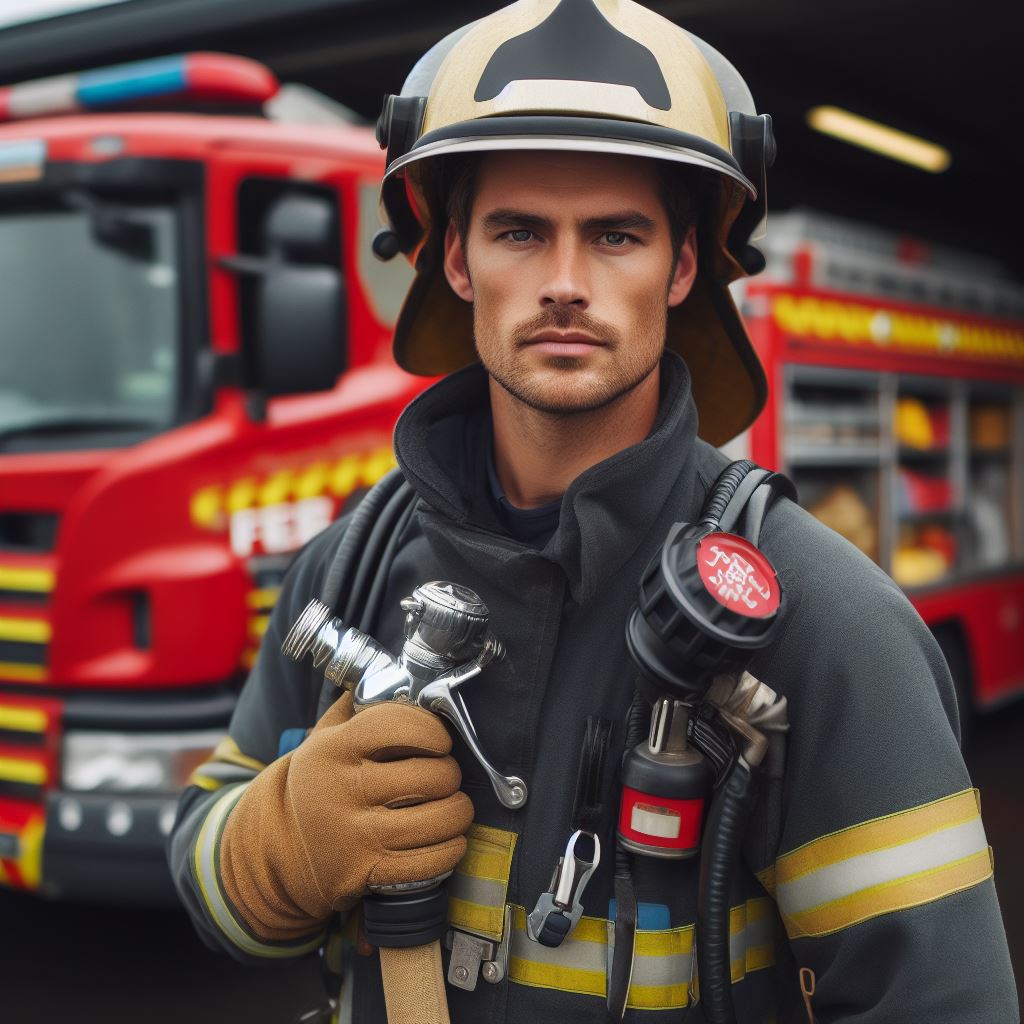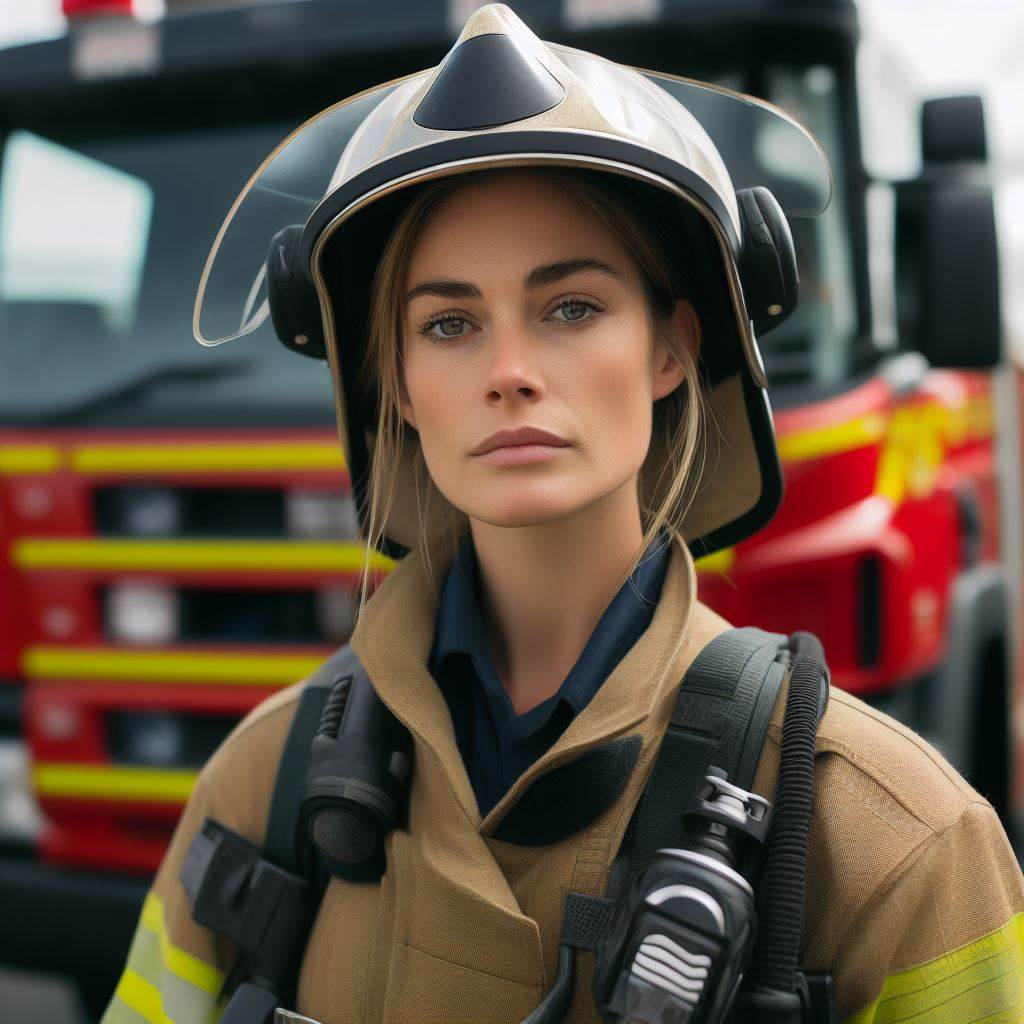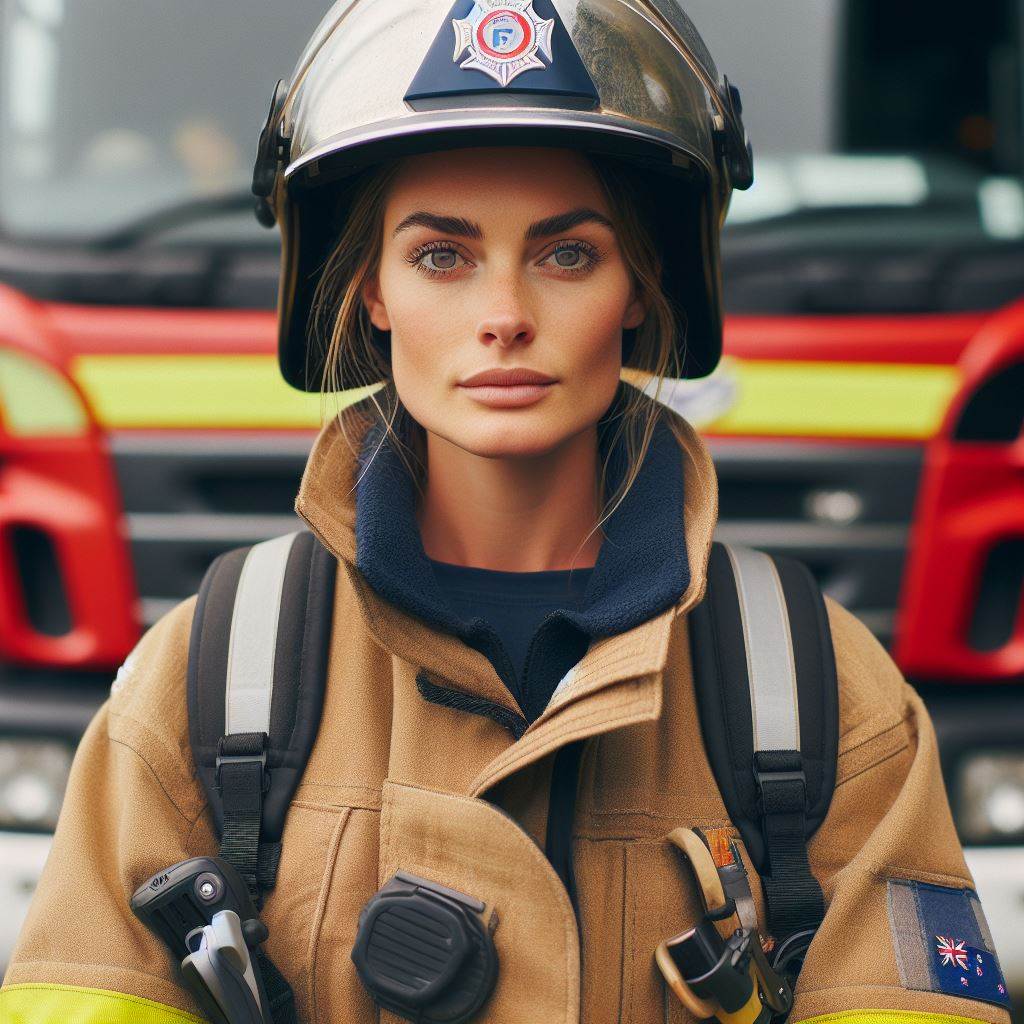Introduction
A. Firefighting in New Zealand
Firefighting in New Zealand is a challenging endeavor due to its diverse terrain and unique environmental conditions.
This blog post will delve into the innovative tactics employed by firefighters in NZ to combat wildfires and structural fires efficiently.
B. Unique Tactics Used by Firefighters in NZ
- Ecological Approach: Firefighters in NZ often adopt an ecological approach, considering the impact of fires on the environment and ecosystems.
- Community Engagement: NZ firefighters emphasize community engagement, educating residents on fire safety and prevention measures.
- Aerial Firefighting: Due to rugged terrain, helicopters and planes are extensively used for water bombing and reconnaissance.
- Volunteer Fire Brigades: NZ relies heavily on volunteer firefighters, who play a crucial role in firefighting efforts.
- Māori Cultural Practices: Some firefighting tactics incorporate Māori cultural practices, respecting the land and its traditions.
- Technology Integration: NZ firefighters use cutting-edge technology, such as drones and thermal imaging, for fire detection and management.
- Collaboration with Australia: Given their proximity, NZ firefighters collaborate closely with Australian counterparts, sharing resources and expertise.
By exploring these unique tactics, we gain insight into the adaptability and innovation of NZ firefighters in protecting lives, property, and the environment.
Geographical Challenges
A. New Zealand’s Diverse Geography
- From stunning coastlines to rugged mountains, NZ boasts diverse landscapes.
- Dense forests cover vast areas, housing unique flora and fauna.
- Mountains, including active volcanoes, dominate the central North Island.
- Remote locations scatter across both islands, challenging accessibility and communication.
B. Unique Challenges for Firefighters
- Varied terrain complicates firefighting efforts, hindering mobility and logistics.
- Remote areas lack infrastructure, making it challenging to deploy resources quickly.
- Harsh weather conditions, including strong winds and heavy rainfall, influence fire behavior.
- Limited water sources in certain regions add complexity to firefighting operations.
C. Specific Areas of Concern
- The rugged Southern Alps in the South Island pose challenges due to steep slopes.
- Fiordland’s dense rainforests present difficulties in accessing fire-affected areas.
- Volcanic regions such as the Taupo Volcanic Zone require specialized safety protocols.
- Remote islands like the Chatham Islands demand strategic planning for fire suppression.
D. Specialized Tactics to Combat Challenges
- Aerial firefighting plays a crucial role in reaching remote and inaccessible areas.
- Use of specialized equipment like off-road vehicles and helicopters enhances mobility.
- Collaborative efforts between agencies and communities improve response effectiveness.
- Training programs focus on adapting tactics to diverse terrain and weather conditions.
In fact, New Zealand’s unique geography presents multifaceted challenges for firefighters.
From dense forests to remote mountains, specialized tactics and collaborative approaches are essential to combat wildfires effectively.
By understanding and adapting to these challenges, firefighters can better protect lives, property, and the environment in this beautiful but rugged landscape.
Read: Health Tips for NZ Firefighting Heroes
Bushfire Prevention and Management
A. Prevalence of bushfires in NZ
Bushfires, though less frequent in New Zealand than in Australia, still pose significant threats.
The prevalence of bushfires in NZ is influenced by climate conditions and human activities.
While the country’s cooler climate reduces the frequency of large-scale bushfires, they remain a concern.
Additionally, the risk of bushfires increases during dry spells and hot summers.
B. Tactics used to prevent bushfires, such as controlled burns
To combat these risks, New Zealand employs various tactics to prevent and manage bushfires.
One of the primary strategies is controlled burns, strategically burning vegetation to reduce fuel loads.
These controlled burns are carefully planned and executed by trained professionals.
By reducing the amount of available fuel, controlled burns help mitigate the intensity and spread of wildfires.
Personalized Career Consulting
Unlock your potential with expert career advice tailored to your goals. Get personalized guidance and actionable steps toward your dream career in New Zealand.
Get StartedC. Importance of proactive fire management in forested areas
Proactive fire management is crucial in forested areas to prevent catastrophic bushfires.
This proactive approach involves regular monitoring of fire danger levels and implementing preventive measures.
It also includes educating the public about fire safety and enforcing regulations to reduce human-caused fires.
Early detection and rapid response are key components of proactive fire management.
D. Role of firefighting crews and equipment in containing and extinguishing bushfires
Firefighting crews and equipment play a vital role in containing and extinguishing bushfires in NZ.
Specialized firefighting crews are trained to handle various types of terrain and fire conditions.
They utilize advanced equipment such as helicopters equipped with water buckets and ground-based firefighting tools.
These crews work tirelessly to contain bushfires before they spread uncontrollably.
In short, while New Zealand may not face bushfire challenges on the scale of its neighbor Australia, the threat is still significant.
Through proactive measures such as controlled burns and vigilant fire management, the country aims to mitigate the risks posed by bushfires.
The dedication of firefighting crews and the utilization of modern equipment are essential in safeguarding the country’s forests and communities from the devastation of bushfires.
Read: Understanding NZ’s Fire Service Hierarchy
Urban Firefighting
When it comes to firefighting in urban areas, firefighters face unique challenges that require specialized tactics.
In densely populated areas and high-rise buildings, the risks and complexities are amplified.
Transform Your Career with a Professional CV and Cover Letter
Stand out to employers with an ATS-optimized resume and tailored cover letter designed to match your dream role. Let us craft your job application materials for success!
Get StartedA. Challenges in Urban Areas
- Increased population density leads to higher chances of fire occurrences.
- Narrow streets and congested traffic hinder quick access and response to emergencies.
- Structures in close proximity increase the risk of fire spreading rapidly.
- Complex building layouts and infrastructure present significant challenges during rescue operations.
- Urban environments often have limited water supply, which affects firefighting efforts.
B. Effective Tactics for High-Rise Buildings and Densely Populated Areas
- Pre-planning and familiarization with the layout of high-rise buildings are vital for efficient firefighting operations.
- Establishing command posts on each floor of a high-rise allows for better coordination and communication.
- Vertical ventilation techniques are crucial in high-rise fires to release smoke and heat.
- Deploying fire-resistant curtain walls or sprinkler systems can help contain and control the spread of fire.
- Using positive pressure ventilation techniques facilitates smoke removal and enhances visibility in densely populated areas.
C. Aerial Firefighting Techniques
- Helicopter buckets or water bombing are effective methods used in urban firefighting for quick water delivery.
- These techniques are particularly useful in situations where ground access is limited or compromised.
- Water bombing can create a barrier and prevent the fire from spreading to nearby buildings.
- Helicopter buckets allow for targeted water application on specific areas or structures.
D. The Importance of Collaboration
- In urban firefighting, collaboration between different agencies and departments is crucial for effective response.
- Firefighters must coordinate and work alongside police, medical services, and municipal authorities.
- Sharing resources, information, and expertise ensures a comprehensive approach to firefighting operations.
- Mutual aid agreements allow for the seamless integration of resources from neighboring jurisdictions.
Ultimately, urban firefighting requires a multifaceted approach that combines proper planning, specialized tactics, and collaboration.
Firefighters must adapt to the unique challenges of urban areas to protect lives, property, and the surrounding communities.
Read: Firefighting Gear: A NZ Perspective

Wildfire Suppression
In New Zealand, strategies for suppressing large-scale wildfires involve a combination of tools, techniques, and resources.
A. Aerial Reconnaissance and Mapping
- Aerial reconnaissance plays a crucial role in wildfire management in New Zealand.
- Specialized aircraft are deployed to provide real-time information on fire behavior, size, and location.
- Using these data, firefighting officials can make informed decisions and prioritize their resources effectively.
B. Specialized Firefighting Aircraft
- Fixed-wing tankers, such as the DC-10 and C-130, are commonly used in New Zealand to drop fire retardants.
- Helicopters equipped with water buckets are also an essential asset for aerial firefighting.
- These aircraft have the ability to reach remote areas quickly, suppress the flames, and support ground crews.
C. Ground Crews
- Ground crews play a vital role in wildfire suppression efforts.
- They are responsible for creating firebreaks, which are areas cleared of trees, vegetation, and other potential fuel sources.
- By controlling the spread of wildfires, these firebreaks act as barriers that help contain the fire.
- Ground crews also work on establishing containment lines, which are constructed trenches used to halt the fire’s advance.
- Equipped with specialized tools like chainsaws and firefighting equipment, they tirelessly combat the flames on the ground.
D. Collaboration and Deployment
- Effective collaboration between aerial and ground resources is crucial for successful wildfire suppression in New Zealand.
- Aerial reconnaissance helps identify areas where ground crews should be deployed strategically.
- Ground crews coordinate with aircraft and develop tactics to minimize the spread and intensity of wildfires.
- Ensuring the safety of firefighters is of utmost importance, and close coordination helps prevent accidents.
E. Challenges
- New Zealand’s rugged terrain and remote locations pose challenges during wildfire suppression operations.
- Accessing some areas can be difficult, making it essential to rely heavily on aerial resources.
- Since wildfires spread rapidly, early detection and rapid response are critical to prevent widespread destruction.
- Climate conditions, including dry spells and strong winds, increase the risk and intensity of wildfires, making suppression efforts more demanding.
Wildfire suppression in New Zealand requires a comprehensive approach utilizing aerial reconnaissance, specialized firefighting aircraft, and skilled ground crews.
By combining these strategies, authorities can effectively suppress large-scale wildfires and protect communities, wildlife, and the environment.
Read: How to Join NZ’s Firefighting Ranks
Search and Rescue Operations
Fighting fires in New Zealand often involves search and rescue operations.
These missions are critical in saving lives and ensuring the safety of individuals trapped in dangerous situations.
A. Unique challenges in locating and rescuing individuals in remote or rugged areas
- Geographical obstacles: New Zealand’s diverse landscapes pose significant challenges.
Mountains, dense forests, and isolated coastal areas make access difficult for firefighters. - Extreme weather conditions: Unpredictable weather patterns and harsh conditions can hamper search and rescue efforts.
Heavy rainfall, strong winds, and low visibility are common challenges. - Vast distances: The expansive territory of New Zealand means that search and rescue missions often require covering extensive distances in order to locate individuals in need of assistance.
- Limited resources: Remote locations may lack proper infrastructure, such as roads or communication networks, making it harder to coordinate and execute rescue operations efficiently.
- Time-sensitive situations: In rural or isolated areas, reaching individuals quickly is crucial due to the limited resources and medical services available.
B. Training and equipment used by firefighters in these operations
Firefighters in New Zealand undergo specialized training to handle search and rescue operations efficiently.
- Survival and navigation skills: Firefighters are trained in wilderness survival techniques, including map reading, compass navigation, and route planning.
- Helicopter operations: Given the challenging terrain, helicopters play a vital role in search and rescue operations. Firefighters receive training in helicopter safety and rescue procedures.
- Technical rope rescue: Firefighters are equipped with the skills and equipment to perform rope rescues in rugged areas, such as mountains or cliffs.
- Medical training: Firefighters are trained in basic medical procedures and first aid to provide immediate assistance to individuals during rescue operations.
- Communication systems: Advanced communication devices enable firefighters to stay connected with their teams and coordinate search efforts effectively.
C. Examples of successful search and rescue missions conducted by NZ firefighters
New Zealand firefighters have demonstrated their expertise and bravery in various search and rescue missions.
- In 2019, a hiker lost in the remote Fiordland National Park was successfully located and rescued after a helicopter search organized by firefighters.
- In 2017, a group of stranded kayakers in rough waters was rescued by New Zealand firefighters using kayaks and a helicopter.
- In 2015, a climber stuck on a cliff face in the Southern Alps was safely rescued by a team of skilled firefighters using technical rope rescue methods.
- In 2020, a missing person in a densely forested area was located and rescued by firefighters using a combination of ground search techniques and aerial support.
- In 2018, a family trapped by rising floodwaters in a remote village was rescued by firefighters who braved treacherous conditions to reach them in time.
These successful search and rescue missions highlight the dedication and expertise of New Zealand firefighters in overcoming the unique challenges posed by their country’s rugged terrain and remote locations.
Conclusion
New Zealand’s firefighting strategies are intricately tailored to navigate its diverse and challenging geography.
The utilization of aerial firefighting techniques emerges as a cornerstone, particularly in rugged and inaccessible terrains where traditional methods fall short.
Boost Your Career with a Standout LinkedIn Profile
Attract recruiters and expand your network with a fully optimized LinkedIn profile tailored to highlight your strengths and professional goals. Let your profile open doors to new opportunities!
Get OptimizedMoreover, the collaborative approach adopted by firefighting agencies ensures the optimal allocation and utilization of resources, maximizing the effectiveness of firefighting efforts.
The importance of these unique tactics cannot be overstated, considering the specific challenges posed by New Zealand’s landscape, characterized by dense forests, remote areas, and variable weather conditions.
In such an environment, conventional firefighting approaches are often inadequate, necessitating innovative solutions and adaptive strategies.
However, beyond the technical aspects, it is the bravery and unwavering dedication of New Zealand firefighters that truly stand out.
They willingly put themselves in harm’s way to protect communities and preserve the country’s natural resources.
Their commitment is not just a job but a calling—a testament to their resilience, selflessness, and sense of duty.
In the face of adversity, New Zealand firefighters exemplify the spirit of courage and sacrifice.
Their tireless efforts go beyond mere firefighting; they are guardians of lives and landscapes, ensuring the safety and well-being of both present and future generations.
New Zealand’s firefighting tactics are more than just methods; they embody the ethos of bravery, dedication, and service.
They are a reflection of the indomitable human spirit in the face of nature’s challenges, and the nation owes a debt of gratitude to these remarkable individuals who stand ready to protect and serve.




